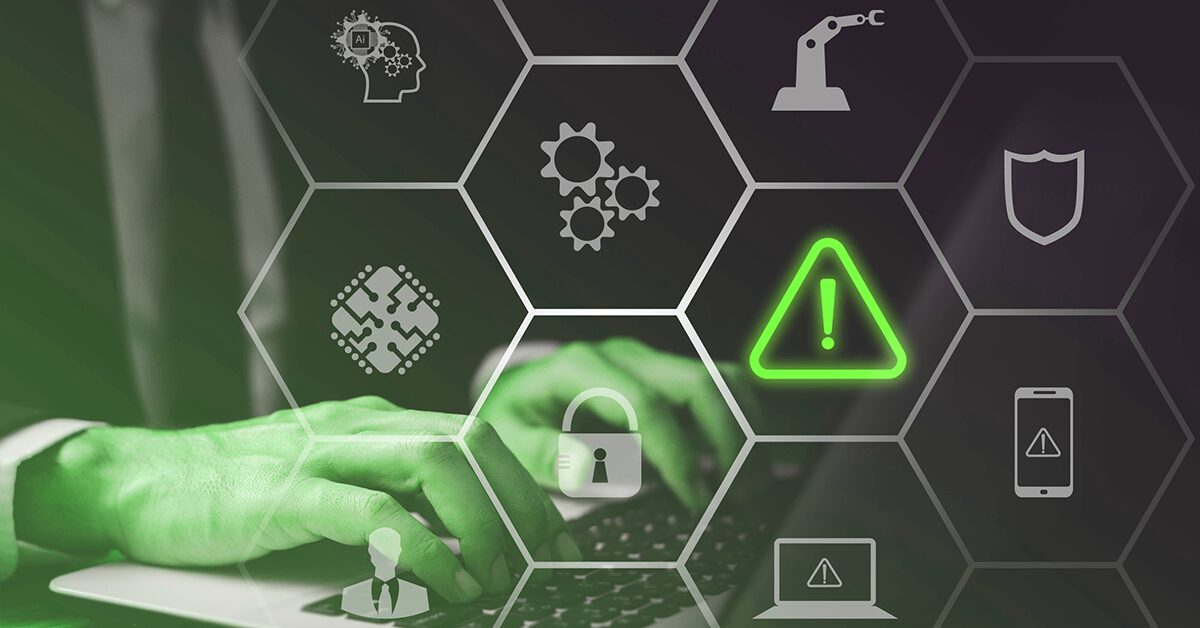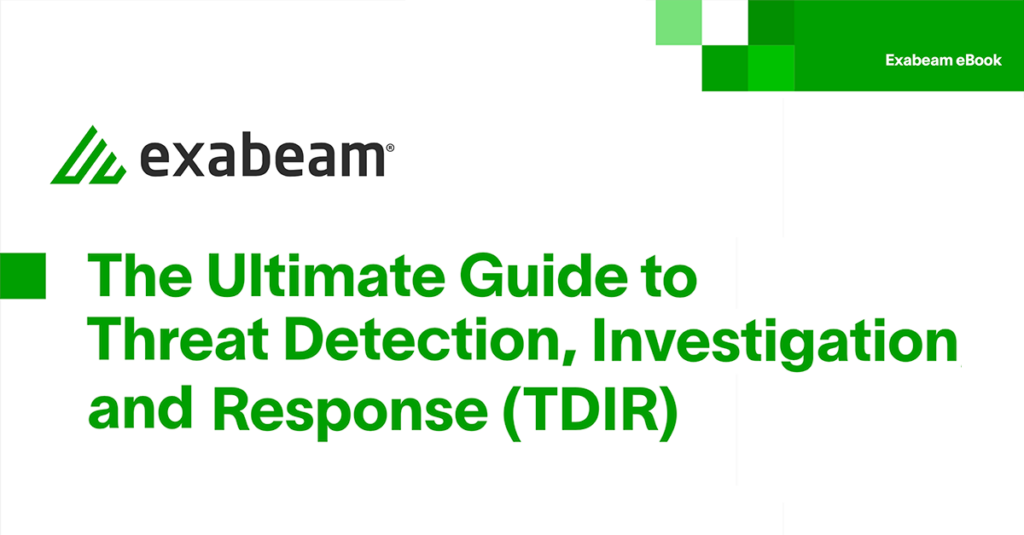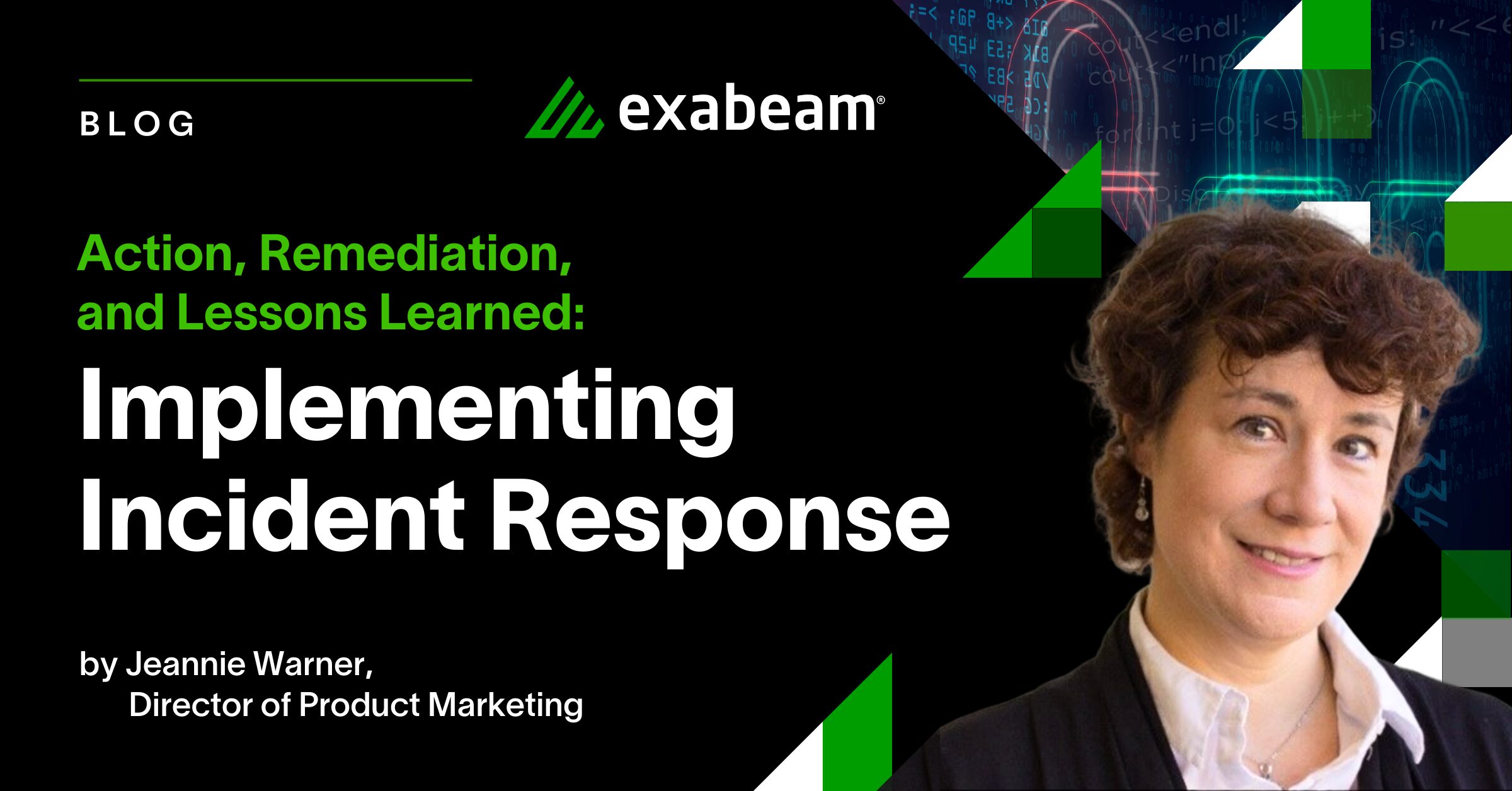The Power of Prioritization and Analysis: Understanding Threat Investigation

An alert pings, signaling that a potential security incident has been detected. A thorough investigation needs to commence imminently — but can it? For too many organizations, the answer is no.
According to Exabeam’s The State of Threat Detection, Investigation, and Response 2023 report, with research insights by IDC, organizations admit they only have visibility into 66% of their IT environment on average, and 41% report that their investigation processes are time-consuming. In fact, all respondents testify that threat detection, investigation, and response (TDIR) workflows as a whole demand more than half of their security teams’ time, and investigation automation tops organizations’ wish lists for their TDIR platforms.
For those with legacy security information and event management (SIEM) systems, which rely on generic log collection methods, threat investigation remains a slow and tedious process. But newer solutions — such as those that include a common information model (CIM) to rapidly and powerfully parse data, contextualize it for security, and prioritize it for investigations — are changing the way organizations approach this critical phase of their TDIR workflow.
So what does an investigation workflow entail? What are the top issues organizations are encountering? And how can a modern SIEM solution help solve them?
In this article:
- Threat investigation at a glance
- The top five investigation hurdles
- Rapid, intelligent investigations
Threat investigation at a glance
For threat detection — the first stage of the TDIR workflow — to be complete, enough information must be gathered to trigger an actionable alert. This data is collected from various systems such as firewalls, endpoints, IPS, cloud platforms, and SaaS applications, measuring against frameworks such as MITRE ATT&CK®, which then power the second stage of TDIR — investigation.
Investigation includes prioritization, where the potential impact of the threat on the organization’s critical operations and data is assessed, and the organization’s most critical use cases are accounted for. After prioritization comes analysis, which involves understanding the nature of a threat, its origin, its current reach and scope, and its potential trajectory.
All of these facets of threat investigation are crucial for devising an effective response strategy and ensuring that the threat is neutralized. With the right preparation, processes, and solutions in place, it can move faster and with more precision. More advanced organizations can also improve consistency by automating investigations based on triggered conditions.
The top five investigation hurdles
Security teams need to know what to investigate, because an incomplete investigation will culminate in an incomplete response. So, it makes sense that the typical security operations center (SOC) dedicates more than 50% of its time to tasks associated with alert prioritization and triage, according to an Exabeam study on security operations processes.
But five challenges frequently prevent analysts from obtaining the full picture of a security incident and quickly combating it:
1. A lack of standardized TDIR processes means that analysts may approach alerts and investigations in different ways, while disparate security solutions may have their own methods for scoring risk. The result is that no two individuals are guaranteed to come to the same conclusions, prioritization takes too much time, and there are glaring gaps in analyses.
2. Immediate action requires immediate insight, but many SOCs don’t have this capability. Most legacy SIEM tools have complex customizations that have been configured for unique business needs. This makes them slow and inflexible when it comes to bringing in new log sources or detections and intelligently unifying the relevant security data that investigations depend on.
3. Disjointed security stacks are another common and potentially disastrous problem. When organizations try to improve their security posture by throwing more point solutions at it, the SOC has to learn and become certified on yet another tool — and all of those tools only add to the overwhelming number of alerts that need to be reviewed and investigated.
4. Both proactive and reactive threat investigations have become more complex, with security and risk managers implementing threat-hunting techniques to actively search for bad actors in their systems. This complexity can be incredibly powerful, but it becomes untenable when dealing with vendor-specific, siloed security tools.
5. Finally, there’s the problem of a shortage of skilled personnel. Analysts often start their careers as Tier 1 analysts in the SOC before they can climb the ranks, and when burdened by tedious manual processes, many choose to leave the field before they cultivate the passion, skill set, and knowledge base to truly excel in the cybersecurity space.
Rapid, intelligent investigations
Having a modern, integrated SIEM solution makes a significant difference in threat investigation by unifying data from across the environment in a single, centralized interface. The inclusion of user and entity behavior analytics (UEBA) is also paramount, because this helps enable two highly effective threat investigation processes: automated triage and automated threat timelines.
With UEBA providing enriched context for every alert, a modern SIEM solution supports triage automation so that alerts are categorized, duplicates are eliminated, and analysts no longer need to perform mini-investigations for all potential flags.
UEBA tools also establish a baseline for normal user, entity, and peer group behavior to help identify anomalies, and when combined with a modern SIEM platform that processes all logs to detail user and asset activities, enable automatic threat timelines. This allows analysts to follow attacks as they move through the organization, including those involving hard-to-detect techniques such as lateral movement.
Of course, there are many intricacies when it comes to threat investigation and how it relates to threat detection and incident response, which you can learn more about in The Ultimate Guide to TDIR.
Unlock Advanced TDIR Strategies
Discover the critical insights and advanced strategies needed to enhance your TDIR capabilities. Read The Ultimate Guide to TDIR — a comprehensive resource with essential practices to understand and master the TDIR workflow. Leverage the latest in security information and event management (SIEM) technologies, optimize your log management, and achieve excellence in incident response.
Elevate your cybersecurity strategy and improve your security team’s efficiency and effectiveness. Download your guide now.

Similar Posts
Recent Posts
Stay Informed
Subscribe today and we'll send our latest blog posts right to your inbox, so you can stay ahead of the cybercriminals and defend your organization.
See a world-class SIEM solution in action
Most reported breaches involved lost or stolen credentials. How can you keep pace?
Exabeam delivers SOC teams industry-leading analytics, patented anomaly detection, and Smart Timelines to help teams pinpoint the actions that lead to exploits.
Whether you need a SIEM replacement, a legacy SIEM modernization with XDR, Exabeam offers advanced, modular, and cloud-delivered TDIR.
Get a demo today!










